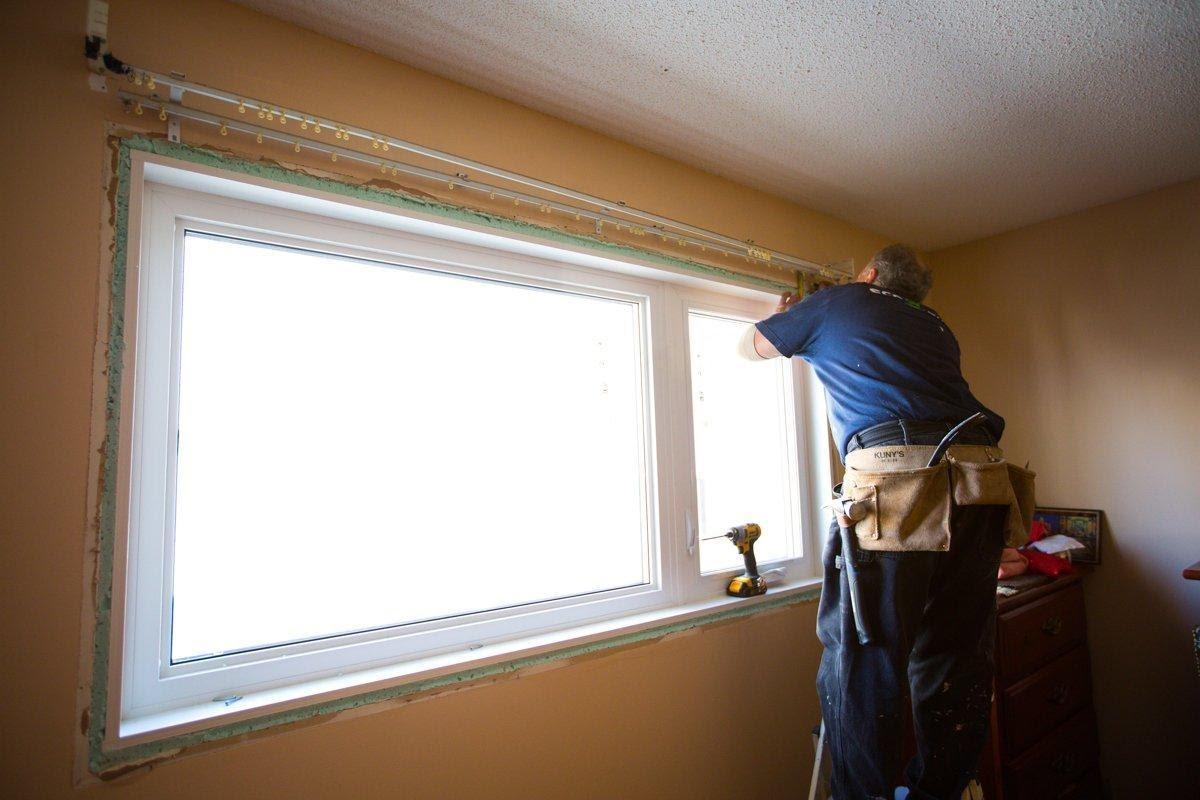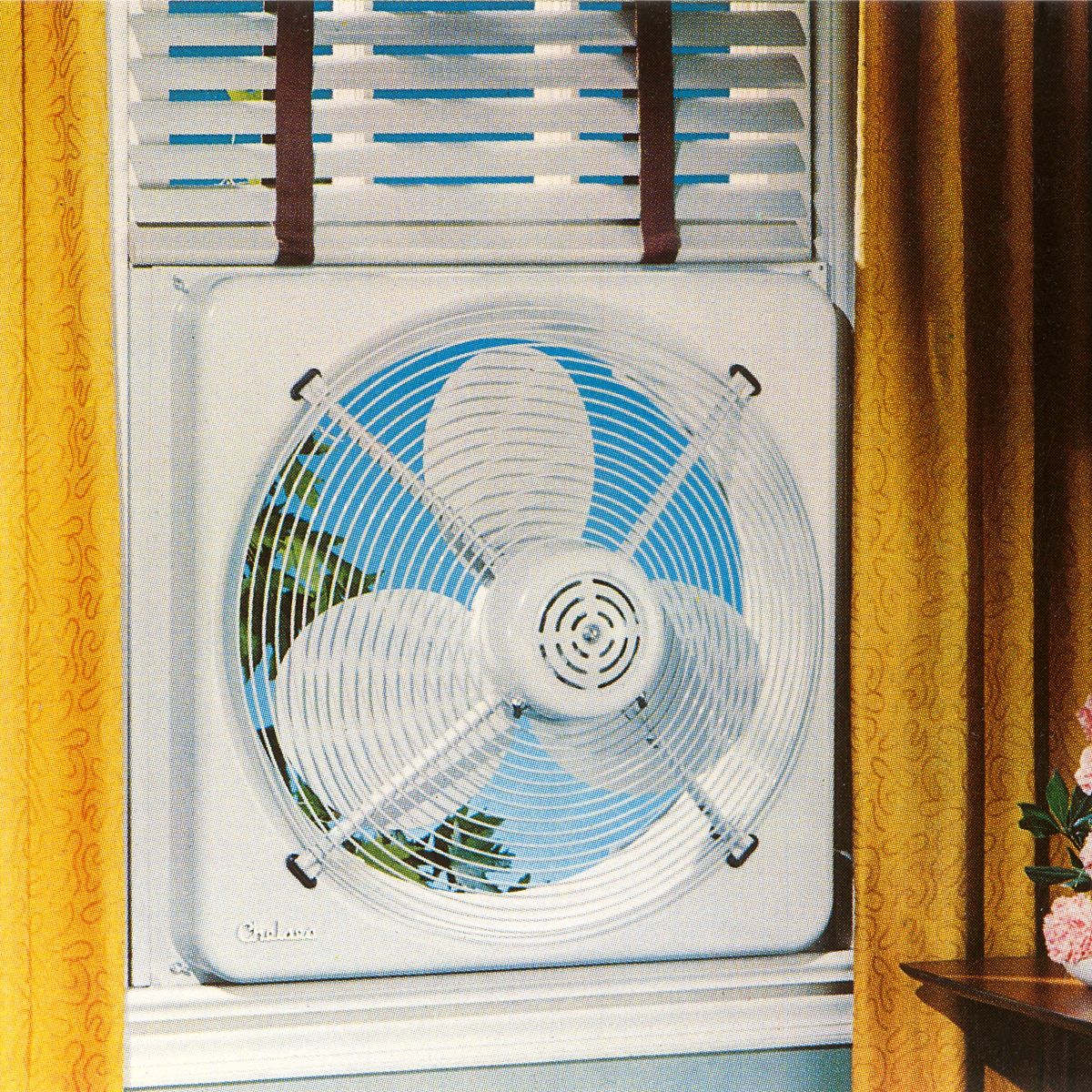

Articles
How To Repair Casement Windows
Modified: December 7, 2023
Learn valuable tips and techniques for repairing casement windows with our informative articles. Fixing common issues has never been easier!
(Many of the links in this article redirect to a specific reviewed product. Your purchase of these products through affiliate links helps to generate commission for Storables.com, at no extra cost. Learn more)
Introduction
Welcome to our comprehensive guide on how to repair casement windows. Casement windows are a popular choice among homeowners due to their versatility and aesthetic appeal. However, over time, these windows may require some maintenance and repairs to ensure they continue to function properly.
In this article, we will walk you through the step-by-step process of repairing casement windows, from assessing the window to reinstalling the sash. Whether you are dealing with a broken latch, damaged hardware, or simply want to give your windows a fresh look, this guide will provide you with the necessary knowledge and techniques to tackle the job.
Before we dive into the details, let’s take a moment to gather the tools and materials you’ll need for this project.
Key Takeaways:
- Properly assessing, repairing, and maintaining casement windows can enhance their functionality and aesthetics, ensuring long-term comfort and energy efficiency in your home. With the right tools and techniques, DIY window repair can be a rewarding and achievable project.
- Thoroughly testing and adjusting the window after repairs is crucial for ensuring smooth operation, proper sealing, and secure locking. Regular maintenance and testing will contribute to the longevity and performance of casement windows, preserving their beauty and functionality.
Read more: What Is A Casement Air Conditioner
Tools and Materials Needed
Before you begin repairing your casement windows, it’s important to have the necessary tools and materials on hand. Here is a list of items you will need:
Tools:
- Screwdriver (flathead and Phillips)
- Pliers
- Putty knife
- Utility knife
- Sanding block or sandpaper
- Paintbrush or stain brush
- Caulk gun
- Measuring tape
Materials:
- Replacement hardware (if needed)
- Caulk or weatherstripping
- Wood filler or epoxy
- Primer
- Paint or stain
- Cloth or sponge
- Masking tape
- Drop cloth or plastic sheeting
Having these tools and materials at your disposal will make the repair process much smoother and more efficient. It’s always a good idea to gather everything you need before you begin, so you don’t have to pause in the middle of the project to search for missing items.
Now that you have your tools and materials ready, let’s move on to the first step: assessing the window.
Step 1: Assessing the Window
Before you start repairing your casement window, it’s important to assess the condition of the window and identify any issues that need to be addressed. Here are some key points to consider during the assessment:
Read also: 12 Best Window Fan With Remote for 2025
Check for Damage:
Inspect the window frame for any signs of damage, such as cracks, rot, or warping. Look closely at the corners, edges, and joints. If you spot any damage, take note of it as it may need to be repaired or replaced.
Examine the Glass:
Check the condition of the glass in the casement window. Look for any cracks, chips, or foggy spots. If there are any issues with the glass, you may need to have it replaced. Note any specific measurements or requirements for ordering a new glass panel.
Test the Operation:
Open and close the window to assess its functionality. Pay attention to any sticking, difficulty in operation, or misalignment. If the window is not opening or closing smoothly, it could indicate a problem with the hardware or hinges that needs to be addressed.
Inspect the Hardware:
Take a close look at the hardware of the casement window, including the handles, hinges, locks, and latches. Check for any signs of wear, rust, or damage. If any of the hardware components are faulty, you’ll need to repair or replace them.
Assess the Weatherstripping:
Check the condition of the weatherstripping around the window frame. Look for any gaps, tears, or signs of deterioration. Proper weatherstripping helps to prevent drafts and improve energy efficiency, so damaged weatherstripping should be replaced.
By thoroughly assessing your casement window, you will have a clear understanding of the repairs that need to be made. This will help you plan and gather the necessary materials for the next steps.
Now that you have assessed your window, let’s move on to the next step: removing the sash.
Step 2: Removing the Sash
In order to properly repair a casement window, you will need to remove the sash. The sash is the part of the window that holds the glass and moves when you open or close the window. Follow these steps to safely remove the sash:
1. Open the Window:
Before you can remove the sash, start by fully opening the casement window. This will make it easier to access and work with the sash.
2. Locate the Mounting Screws:
Look for the screws that secure the sash to the window frame. These screws are usually located on the sides or the top of the sash. Use a screwdriver to remove these screws and set them aside for later use. Some casement windows may have additional screws on the bottom of the sash, so be sure to check all sides.
Read more: How To Childproof Windows
3. Remove the Sash:
Once the mounting screws are removed, you can carefully lift the sash out of the window frame. Start by lifting one side and tilting it towards the inside of the room. Then, lift the other side and gently remove the sash from the window frame. It’s important to be cautious while handling the sash to avoid any accidental damage or injury.
4. Set Aside the Sash:
Once the sash is removed, place it in a safe and clean area where it won’t get damaged. Consider placing it on a soft surface, such as a cloth or a foam pad, to protect the glass and finish.
By removing the sash, you now have better access to the window frame and all the components that need to be repaired or replaced. Let’s move on to the next step of identifying the problem with your casement window.
Step 3: Identifying the Problem
After removing the sash from your casement window, it’s time to identify the specific problem that needs to be addressed. This step is crucial as it will help you determine the appropriate repair or replacement solution. Here are some common problems you may encounter:
1. Broken or Damaged Hardware:
Inspect the hardware components of the window, including handles, hinges, locks, and latches. Look for any signs of damage, rust, or wear. If any of the hardware is broken or malfunctioning, it will need to be repaired or replaced.
Read more: Window Repairs & How-To
2. Rotted or Damaged Wood:
Check the window frame for any signs of rotting or damage. Look for soft spots or wood that is crumbling or deteriorating. If the wood is significantly compromised, it may need to be repaired or replaced to ensure the window’s structural integrity.
3. Drafts or Air Leaks:
Inspect the weatherstripping and the seals around the window frame. Look for any gaps, tears, or signs of deterioration. If there are drafts or air leaks, they need to be addressed by replacing or repairing the weatherstripping or sealing the gaps with caulk.
4. Glass Issues:
Examine the window glass for any cracks, chips, or foggy spots. If the glass is damaged, it will need to be replaced. Measure the dimensions of the glass accurately to ensure the proper fit when ordering a replacement.
By identifying the specific problem areas, you’ll be able to plan your repair strategy accordingly. Whether it’s replacing hardware, repairing wood, sealing gaps, or ordering new glass, knowing the problem will guide you in the next steps of repairing your casement window.
Now that you’ve identified the problem, let’s proceed to step 4: repairing or replacing the hardware.
Step 4: Repairing or Replacing Hardware
Once you have identified any hardware issues with your casement window, it’s time to address them in this step. Repairing or replacing faulty hardware is crucial for ensuring proper operation and functionality. Here’s how you can go about it:
Read more: How To Brick In A Window
1. Remove the Hardware:
If you need to replace hardware components like handles, hinges, locks, or latches, start by removing the existing hardware. Use a screwdriver to loosen and remove any screws or fasteners holding the hardware in place. Keep the hardware in a safe place for reference or for reinstallation later.
2. Inspect the Hardware:
Once the hardware has been removed, thoroughly inspect it for any signs of wear, damage, or rust. Determine if the hardware can be repaired or if it needs to be replaced entirely. In some cases, a simple cleaning and lubrication may be all that’s needed to restore functionality.
3. Repair or Replace the Hardware:
If the hardware can be repaired, follow the necessary steps to do so. This may involve tightening loose screws, straightening bent parts, or applying a rust converter. If the hardware is beyond repair, purchase suitable replacements from a hardware store or online retailer. Make sure to select hardware that matches the size, style, and design of your casement window.
4. Install the New Hardware:
If you’ve purchased new hardware, carefully follow the manufacturer’s instructions for installation. Use the appropriate tools and fasteners to securely attach the new hardware to the window frame. Ensure that the hardware is aligned properly and functions smoothly.
Read more: How To Open An Awning Window
5. Test the Operation:
With the new or repaired hardware in place, test the operation of the casement window. Open and close the window to ensure that the hardware functions correctly and the window operates smoothly.
By repairing or replacing the hardware, you can restore the proper functioning of your casement window. This step is essential to ensure that your window is secure, easy to use, and provides you with the desired level of comfort and convenience.
Now that you have addressed any hardware issues, let’s move on to step 5: cleaning and sanding the window.
Step 5: Cleaning and Sanding
After dealing with the hardware of your casement window, it’s time to clean and prepare the window for any necessary repairs or refinishing. Cleaning and sanding the window surfaces is crucial to remove dirt, debris, and old paint, ensuring a smooth and clean surface for further treatments. Follow these steps to clean and sand your casement window:
1. Gather Your Supplies:
Before you start cleaning and sanding, gather the necessary supplies. This includes a bucket of soapy water, a sponge or cloth, a sanding block or sandpaper (medium and fine grit), and a vacuum or brush to remove dust.
2. Remove the Sash (if not already removed):
If you haven’t removed the sash during the previous steps, now is the time to do so. This will allow you easier access to all areas of the window for cleaning and sanding.
Read more: How To Cover Sunroom Windows
3. Clean the Window Surfaces:
Using a sponge or cloth soaked in the soapy water, gently scrub the surfaces of the window frame, sash, and any other components. Pay special attention to areas with dirt buildup, mold, or mildew. Rinse with clean water to remove any residual soap and then dry the surfaces thoroughly.
4. Sand the Window:
With the surfaces dry, it’s time to sand the window. Start with a medium-grit sandpaper or sanding block and lightly sand the surfaces in the direction of the wood grain. This will remove any loose paint, rough spots, or imperfections. Follow up with a finer-grit sandpaper to smooth the surface further.
5. Remove Dust:
After sanding, it’s important to remove the dust and debris. Use a vacuum or brush to thoroughly clean the window surfaces, sash, and frame. This will ensure that any loose particles are removed before moving on to the next steps.
By cleaning and sanding your casement window, you’re preparing it for further repairs or refinishing. This step ensures a clean and smooth surface for the application of paint, stain, or other desired treatments.
Now that the window is cleaned and sanded, let’s proceed to step 6: painting or staining the window.
Step 6: Painting or Staining the Window
Once you have cleaned and sanded your casement window, it’s time to give it a fresh look by painting or staining the surfaces. Painting or staining not only enhances the appearance of the window but also provides protection against the elements. Follow these steps to paint or stain your casement window:
Read more: How To Decorate A Window Seat
1. Prepare the Workspace:
Before you start painting or staining, create a suitable workspace. Lay down a drop cloth or plastic sheeting to protect the surrounding area from any drips or spills. Ensure good ventilation by opening windows or using fans if necessary.
2. Choose the Right Paint or Stain:
Depending on your preference, select either paint or stain that is designed for exterior use and suitable for wood surfaces. Consider factors such as color, durability, and the climate conditions your windows will be exposed to.
3. Apply Primer (if necessary):
If you’re painting bare wood or making a drastic color change, it’s recommended to apply a primer first. Primer helps to create a smooth and even base for the paint and improves its adhesion.
4. Paint or Stain the Window:
Using a paintbrush or stain brush, apply a thin and even coat of paint or stain to the window surfaces. Start with the edges and corners, working your way across the larger areas. Apply multiple coats as needed, following the manufacturer’s instructions on drying times between coats.
Read more: How To Install A Bay Window
5. Allow for Drying and Curing:
After applying the paint or stain, allow it to dry and cure according to the manufacturer’s instructions. This will ensure a durable finish that can withstand daily use and weather conditions.
6. Reinstall the Sash:
Once the paint or stain is fully dry, you can reinstall the sash back into the window frame. Follow the instructions from Step 2 to carefully place and secure the sash.
By painting or staining your casement window, you’re not only adding a fresh look to it but also providing essential protection against the elements and extending its lifespan. Ensure you choose high-quality paint or stain and follow proper application techniques for the best results.
Now that your casement window is painted or stained, let’s move on to step 7: reinstalling the sash.
Step 7: Reinstalling the Sash
After painting or staining your casement window and allowing the finish to dry, it’s time to reinstall the sash. Follow these steps to securely and properly reinstall the sash:
1. Clean the Window Frame:
Before reinstalling the sash, make sure to clean the window frame and remove any debris or dust that may have accumulated during the painting or staining process. Use a cloth or brush to ensure a clean and smooth surface.
Read more: How To Clean Awning Windows
2. Align the Sash:
Align the sash with the window frame, ensuring that it fits properly and sits flush. The bottom of the sash should be seated correctly in the window sill, and the sides should align with the frame. Take your time to make sure the sash is positioned correctly before moving on.
3. Insert the Mounting Screws:
Using the screws that were removed during Step 2, insert them back into their respective holes. Tighten the screws gently, ensuring that they are secure but not overly tightened, as this can cause damage to the sash or frame.
4. Test the Operation:
Once the sash is securely in place, test the operation of the casement window. Open and close the window to ensure it moves smoothly and latches securely. If any issues are detected, such as sticking or misalignment, you may need to adjust the sash or hinges accordingly.
5. Make Final Adjustments:
If necessary, make any final adjustments to ensure the sash is aligned properly and functions smoothly. This may involve tightening or loosening screws, adjusting hinges, or making minor tweaks to improve the operation of the window.
By reinstalling the sash, you are bringing your casement window back to its fully operational state. Take your time to ensure the sash is properly aligned and secure, as this will ensure a well-functioning window that provides both comfort and functionality.
Now that your sash is back in place, let’s move on to the final step: testing and adjusting the window.
Read more: How To Remove Window Blinds
Step 8: Testing and Adjusting the Window
After reinstalling the sash, it’s important to thoroughly test and make any necessary adjustments to ensure the casement window is functioning properly. Follow these steps to test and adjust your window:
1. Test Opening and Closing:
Open and close the casement window multiple times to check the smoothness of its operation. Ensure that it opens and closes without any sticking or resistance. Pay close attention to any friction points or areas that may require adjustment.
2. Check for Proper Sealing:
Close the window completely and inspect the seals around the frame. Look for any gaps or areas where air or drafts may be coming through. If there are gaps, you may need to adjust or replace the weatherstripping to ensure a proper seal.
3. Verify Locking Mechanism:
Engage the locking mechanism on the casement window to ensure it securely locks in place. Check that the lock properly engages with the strike plate or keepers, providing a tight and secure closure. If the lock is not functioning properly, make any necessary adjustments or repairs.
Read more: How To Open A Stuck Window
4. Test Ventilation and Safety Features:
If your casement window has ventilation or safety features such as an adjustable limit handle, test these functions to ensure they operate as intended. Make any adjustments necessary to ensure proper airflow or safety measures based on your preferences.
5. Inspect for Any Additional Issues:
While testing the window, keep an eye out for any other potential issues such as water leakage, unusual noises, or improper alignment. Address any identified issues by making the necessary adjustments or repairs.
By thoroughly testing and adjusting your casement window, you can ensure its proper functioning and address any issues before they become more significant problems. Regularly testing and maintaining your window will contribute to its longevity and overall performance.
Congratulations! You have successfully repaired and restored your casement window. By following these steps, you have enhanced its functionality, aesthetics, and energy efficiency. Now you can enjoy the benefits of a fully operational casement window that adds comfort and beauty to your home.
If you have any further questions or if additional repairs or maintenance are needed in the future, don’t hesitate to consult a professional or refer back to this guide.
Thank you for using our comprehensive guide on how to repair casement windows. Happy repairing!
Conclusion
Repairing casement windows can seem like a daunting task, but with the right knowledge and tools, it can be a rewarding DIY project. By following the step-by-step guide outlined in this article, you have learned how to assess, remove, repair, and reinstall casement window components, as well as how to clean, sand, and refinish the window surfaces. With these skills, you can maintain the functionality and appearance of your casement windows for years to come.
Throughout the repair process, it is important to prioritize safety, take your time, and ensure that you have all the necessary tools and materials at hand. By properly assessing the window, identifying the problem, and repairing or replacing faulty hardware, you can address issues such as broken latches, damaged hinges, rotted wood, or drafty seals. Additionally, cleaning, sanding, and painting or staining the window surfaces will not only improve its aesthetics but also provide protection against the elements.
Remember to test and adjust the window after reinstalling the sash, ensuring smooth operation, proper sealing, and secure locking. Regular maintenance and testing will help extend the lifespan of your casement windows and keep them in excellent condition.
If you feel unsure about handling any aspect of the repair process, it’s always a good idea to consult a professional window repair or restoration service. They can provide expert guidance and ensure that the repairs are done correctly and safely.
We hope that this comprehensive guide has empowered you with the knowledge and confidence to tackle casement window repairs. By taking care of your windows, you are not only improving the comfort and energy efficiency of your home but also preserving its aesthetic appeal.
Thank you for trusting our guide, and we wish you success in your casement window repair endeavors!
Frequently Asked Questions about How To Repair Casement Windows
Was this page helpful?
At Storables.com, we guarantee accurate and reliable information. Our content, validated by Expert Board Contributors, is crafted following stringent Editorial Policies. We're committed to providing you with well-researched, expert-backed insights for all your informational needs.




0 thoughts on “How To Repair Casement Windows”